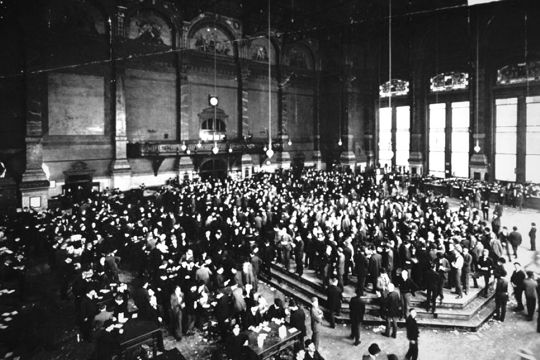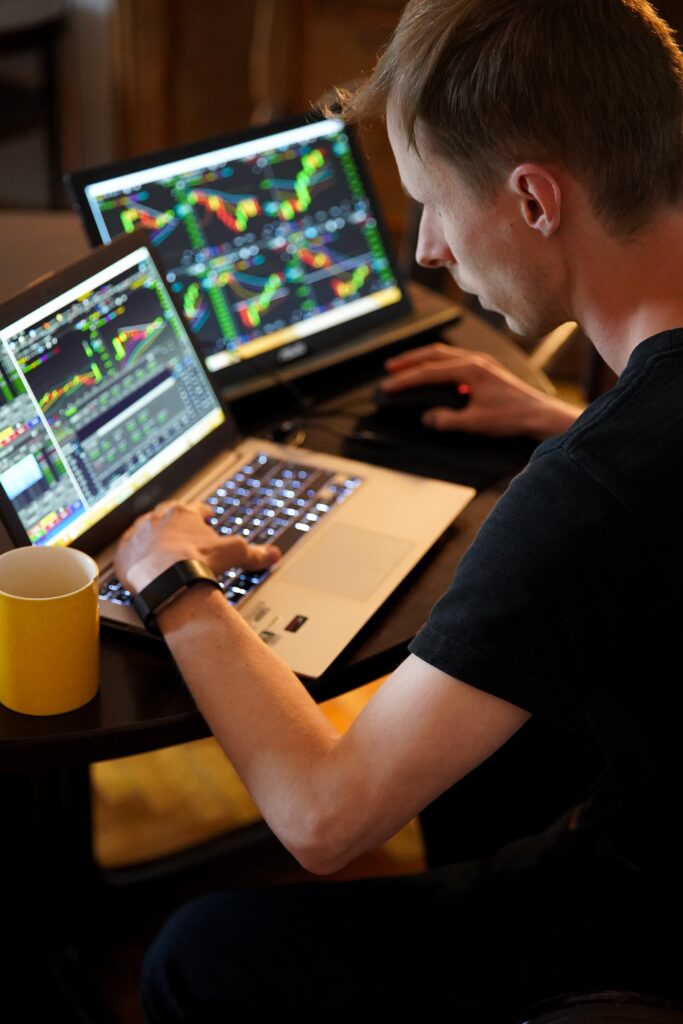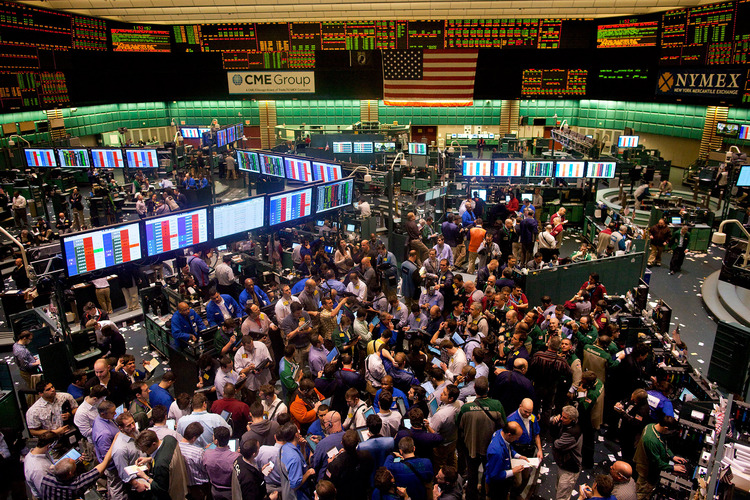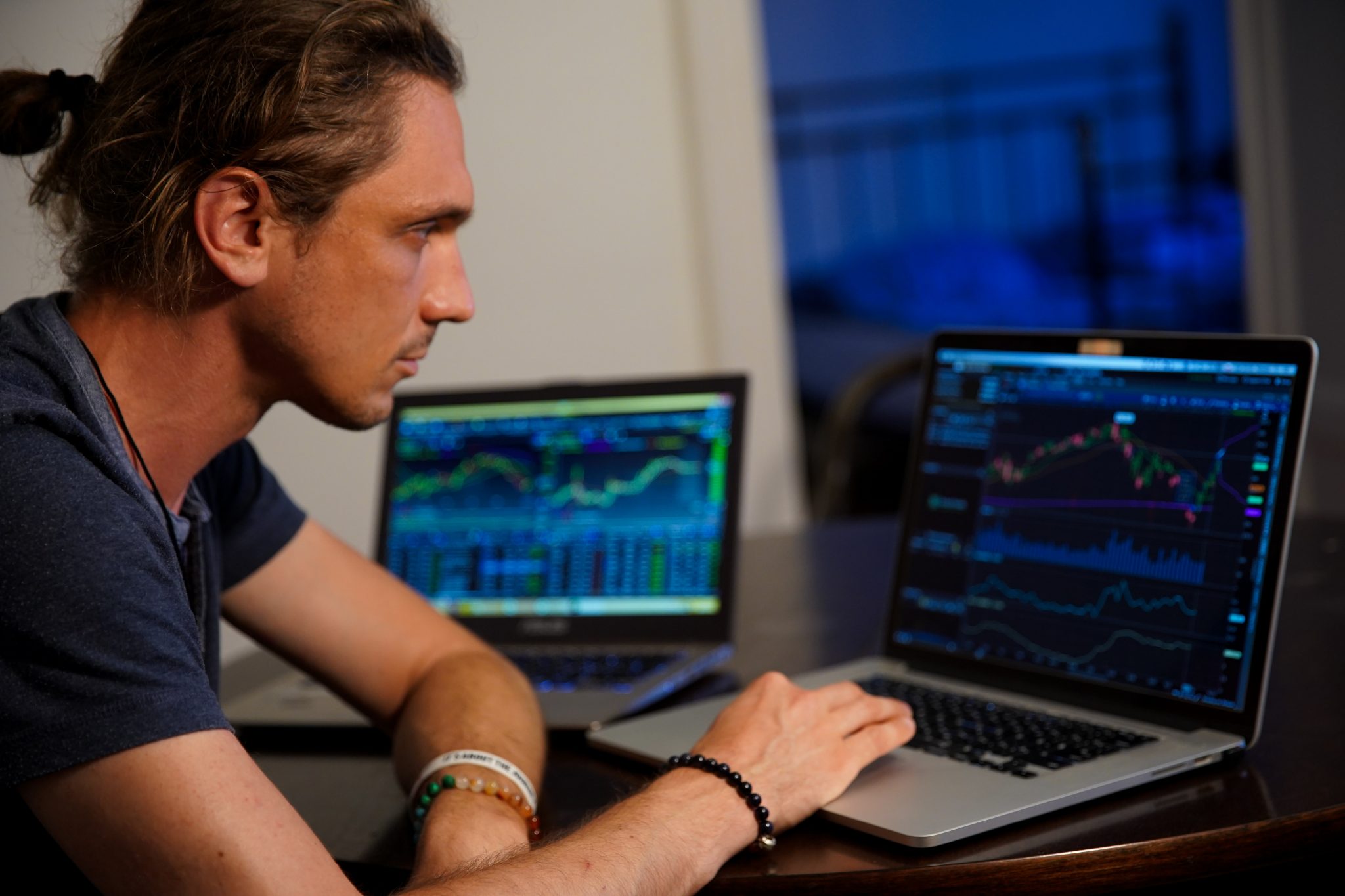Interested in trading futures? In our previous introductory text about derivatives, we defined futures as standarized derivative instruments used by parties to buy/sell an underlying asset or other derivative at a future date, at a price agreed today, publicly traded at a future exchange. In this article we are going to expand the knowledge about futures with 9 main points in mind.
Trading futures contracts in 1 minute
Futures are standarized derivative instruments that trade on a futures exchange.
Futures exchanges act as a marketplace that links buyers and sellers, where exchanges become the counterparty of all transactions. Exchanges monitor and settle daily contracts’ gains/losses. This control scheme minimizes default risk for sellers/buyers.
Futures contracts have existed at least since the 18th century
The first futures markets can be traced to the 18th century, when futures where used to secure the price of rice crops in Japan. Modern futures markets originated from the commodity markets, mainly in Chicago, around the mid 19th century.

Back then, grain producers were only able to fix the price of their crops at the time of the physical sale. In times of grain oversupply it lead to very low prices, and in time of grain shortage it lead to high prices. Producers (and consumers) had no means to protect themselves against price volatility.
Then, a group of businessmen founded the Chicago Board of Trade (CBOT) to address this issue. The main idea was that producers could sell their physical crops before delivery using increasingly standarized forwards contract (ie a contract with a price agreed today for which the delivery takes place at a later date). This is how trading futures started.
Why would that work? Because grain producers/consumers wanted to be able to secure the price of their crops in advance, while some investors or grain traders wanted to take the price risk and speculate. A central trading marketspace decreased risks for its participants, while increased liquidity and thus ensured best prices.
This primitive market of standarized forward physical delivery contracts soon became very popular, to the point of leading to the development of a secondary market – ie a market in which those initial contracts for future deliveries were traded again. This secondary markets allowed for easier transactions between parties and evolved to become even more standarized, to the point of leading to a more unique type of forwards contracts: futures contracts.
The next step for futures exchanges was the creation of clearinghouses and other risk-management mechanisms. Progressively, futures become increasingly popular as a tool to hedge/take risks, and started blooming worldwide, leading to the creation of other famous institutions such as the New York Mercantile Exchange, or the
In this sense, futures markets serve both purposes; a) producers who want to hedge, and b) investors/traders who have a speculative view on the price.
You can read more about the history of futures exchanges here.
Main characteristics of futures.
Futures are publicly traded standardized contracts
Futures transactions are highly standarized, with only three factors open to customization: quantity, expiration date, and price. The rest of the terms of the contract are not customizable. All other terms are stablished by the relevant exchange and are accepted by parties upon trading futures (find an example of contract specs of the Soybean contract at CBoT here). In the event that parties need more customization, then parties should use a private ad-hoc forward contract instead.
One of the main advantages of standarization of the terms of the contract is that it increases its tradeability. Standardized contracts can more easily be traded in secondary markets (ie be sold or resold), which leads to higher market liquidity.
Trading futures in a liquid market should lead to an efficient market price discovery for all participants, which is the underlying purpose of the exchange. Liquidity is also one of the fundamental differences between forward and futures contracts; forwards are customized and thus less liquid, while forwards are standarized and more liquid. The next point will explain the concept of liquidity in detail.
Futures are more liquid than forwards
Liquidity refers to the degree to which an asset can be transacted quickly and economically. A futures trader can close his position anytime by entering an opposite transaction, thus liquidating his long/short.
This is possible because futures are fungible and the exchange is the counterparty to all transactions. Futures markets are more liquid than forward markets, because trading futures one can offset its position anytime.
For example, a trader who went long (ie bought) a May Soybean futures contract can subsequently short (ie sell) his position before expiration and settle his P&L (ie profit and loss) with the exchange. This process, aka as offsetting or closing a position is much simpler and efficient when the exchange is always the counterparty to all trades.
The exchange aggregates the most recent offers and bids for contracts listed at that exchange, so that potential buyers/sellers can find out where the market is trading. Opening a futures position becomes very simple: just choose contract calendar month, quantity, and if price is OK, just buy/sell.
Market liquidity and market spreads are closely related. Market spread means the price difference between the highest bid and the lowest offer. The market spread is small in liquid markets and big in illiquid markets. High spreads mean high transaction costs.
So what are liquid markets? Liquid markets are markets where there are many parties willing to trade. This, in turn, results in more bids and offers, which then lead to more competitive market spreads (ie smaller spreads, lower transaction costs).
Popular markets such as the EUR/USD, USD/JPY, SP500, DAX30, Crude Oil, or Treasury Bonds, are among the most liquid financial instruments available. In contrast to liquid markets, illiquid (aka as thin) markets do not have high levels of activity and exhibit high market spreads.

How do futures work?
Futures contracts transactions are publicly reported to a the futures exchange, clearinghouse, and even a regulatory agency. High transparency levels ensure virtually no default risk, as exchanges keep a close monitoring on the positions of the parties.
Margin down payments decrease counterparty risk
Futures exchange require participants the deposit of a relatively small sum called margin, which ensures performance and minimizes risk of default. Daily revision of the margin amounts lead to lower counterparty risk. This process is generally known as marking-to-market (M2M).
Margin in futures is different to margins in stock markets. In futures exchanges, traders must put up certain quantity when opening a position. This quantity is called initial margin requirement, and should be understood as a sort of down payment or collateral for the commitment to purchase/sell at a later date.
Clearinghouses generally set the margin requirements, in line with the expected level of price volatility for a particular instrument. Read more about clearinghouses in the next point.
Clearinghouses market-to-market on a daily basis to adjust margins
Futures exchanges guarantee the performance of the futures contracts through the a mechanism known as the clearinghouse. Clearinghouses monitor the counterparty risk level by adjusting the margin levels daily (or even more often if market moves drastically).
Clearing houses market-to-market positions on a daily basis, by adjusting position margins to the daily settlement prices. Parties who are trading futures are thus required to increase margin amounts when market moves against them, thereby decreasing the likelihood of default.
This represents a key difference to forward contracts, where parties are unprotected against counterparty default and therefore assume counterparty risk.
Traders can offset open positions before expiry and get a cash settlement
On one side, traders have the ability to close (or offset) a futures contract position by entering an opposite transaction. This leads to both a long and a short position with the clearinghouse, which is considered to be offset and thus leads to a cash settlement.
Alternatively, parties can choose delivery of the contracts
On the other side, traders might prefer to take actual delivery of the futures contract and accept the physical performance of the contract. The conditions of the delivery are also stipulated by the exchange, and minimize the risk of misunderstanding and default.
Futures markets are highly regulated
Futures contracts are globally relevant in the financial markets and hence regulated to ensure professional practices, minimize market abuse risks, and protect the market participants. Trading futures is now increasingly regulated, leading to higher levels of transparency, and accountability.
Futures exchanges are regulated to a variety of levels, thus increasing the level of protection of the trading parties. For example, in the UK, the Financial Services Authority (FSA) regulates securities and futures markets. In the USA, futures contracts are regulated by the Commodity Futures Trading Commission (CFTC) and the National Futures Association (NFA).
What futures do you trade?








